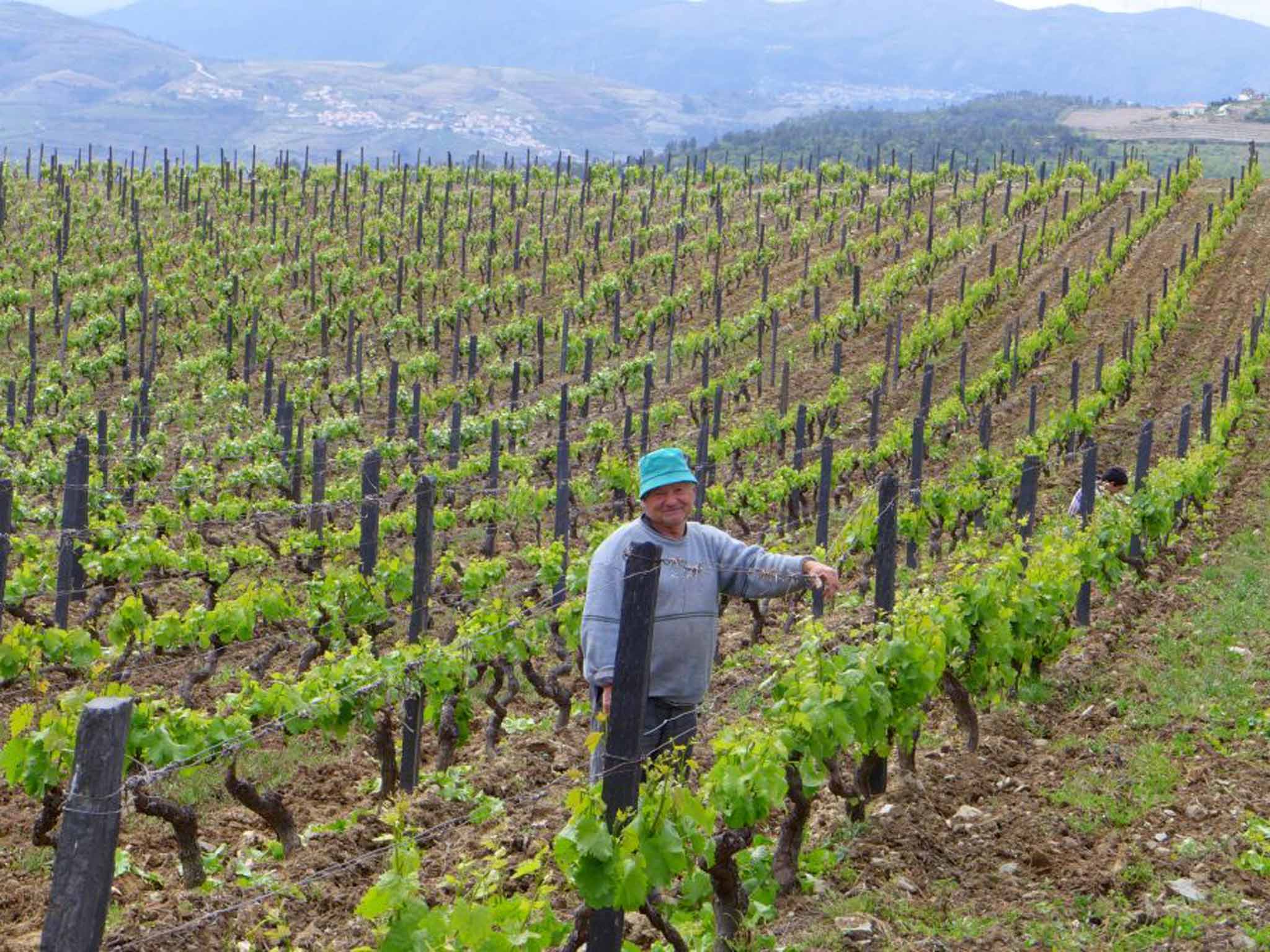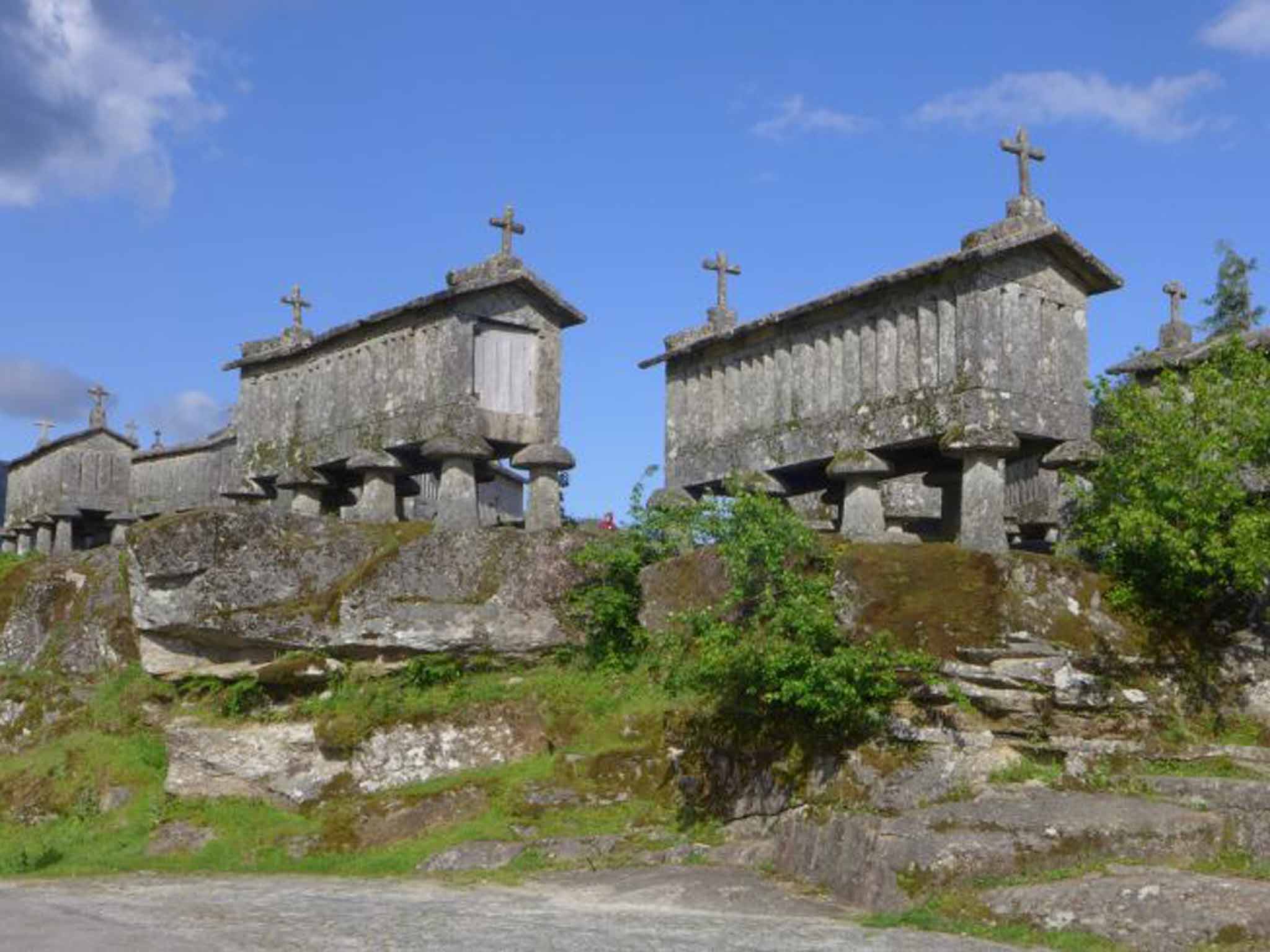The Independent's journalism is supported by our readers. When you purchase through links on our site, we may earn commission.
Portugal: Mists and mellow fruitfulness
Low-key agricultural conversions amid the vines and ancient towns of the Douro and Minho regions are opening up the cool, green north of Portugal to visitors. Fiona Dunlop drinks it all in

Portugal's majestic Douro Valley is no secret. Indeed, it has been on the international radar for centuries, ever since the British muscled in on the port trade. Behind its mountain curtain just east of Porto, the valley is almost entirely comprised of steep, rugged hillsides etched with row upon row of vines that plunge down to the languorous river. Many of the beautiful quintas (country estates and wineries) dotted over the hills or huddled in folds of valleys have now opened their doors to guests, adding in seductive extras such as pools and – naturally – wine-tastings.
The Independent Travel Offers: Our favourite Douro Valley holiday
But there is another, mellower and lesser-known wine region to explore, to the north of Porto near the Spanish border: Minho-Lima, between the Minho and Lima rivers, more concisely known as the Minho.
Lush and green, Portugal's wettest region is a visual dream of mists, wild flowers, roses, monumental cedars, vertical vines and even Baroque gardens. So that makes two contrasting settings and some very diverse wines, both under two hours' drive from Porto. My base in the Minho was the Quinta do Ameal, a hilly enclave bordering the Lima river opposite the town of Ponte de Lima. The vineyard produces award-winning vinho verde in a setting of glorious woodland, walnut groves and wisteria-draped pergolas, sweeping views of which are visible from the pool.
Like many enlightened Portuguese vintners, owner Pedro Araujo sees "oeno-tourism" as a business opportunity. The result is an imaginative conversion of a fine old quinta into self-catering suites with thick granite walls, immense bathrooms and crisp Portuguese bedlinen. A bag of crusty bread rolls was delivered daily by Yolanda straight from the bakery, while each evening, I'd sit in the beautiful garden at that delicious twilight hour, sipping a glass of white Loureiro and nibbling walnuts – both produced just yards away.

Best of all were early walks through the estate when morning mists drifted across the vineyards. When I finally reached the river, it felt almost Tolkienesque. Only just visible through the mist, the audibly fast-flowing water reminded me that two millennia ago the invading Romans believed it was the mythical Lethe, or river of forgetfulness: cross to the opposite bank and your life was lost to amnesia in an instant.
Similarly ancient is Ponte de Lima, reputed to be Portugal's oldest town. It's a tranquil assemblage of solid granite houses, some aristocratically ornate, lining streets that wind down to the stupendous Roman bridge. The town has a bustling food market that is big on bacalhau (salt cod) and smoked chourico (the Portuguese variant on Spain's chorizo).
There are plenty of beguiling little shops, bars and restaurants. A morning coffee at Mercearia da Vila came with an intriguing display of hand-made metal toys, sumptuous cakes on glass stands, a line-up of local jams and a copious menu of snacks – all written by hand in a notebook.
Later, at a buzzing little bar, Os Telhadinhos, I demolished a hearty home-made soup accompanied by a white bowl of young red wine, while a cheerful senhora cooked up virtually anything to order for locals glued to the football on television.
From here, it was a tough choice: west to the wild Atlantic beaches around Viana do Castelo, or east into the national park of Peneda-Geres. I chose the latter and headed up into wild hills blanketed with gorse and heather, with vertiginous views and long-horned cattle in the meadows below. In the tiny village of Soajo, an impressive cluster of espigueiros, traditional granite grain-stores, are identical to the hórreos of Galicia, a short hop away over the Minho river – a rustic reminder that these two regions were once one.
The drive south-east from Minho to Douro, passes dozens of pretty smallholdings. Orange and lemon trees grow beside vines trained on high posts in order to squeeze in vegetables or corn beneath. The route also takes in the elegant town of Braga, Portugal's Catholic heart and capital of Baroque. Here I was intent on rediscovering a magical garden I had seen years before at the Monastery of Tibaes. After undergoing 20 years of renovations, this little-known but vast Benedictine structure is an absolute treasure. In 40 acres of enclosed land, its garden is romantically rambling. A staircase of seven terraced fountains is lushly overgrown beside ragged box hedges, water-channels and – like a jewel amid beeches, cedars, mosses and ferns – an emerald-green pond. But as the bells tolled, it was time for me to move on.
At last, I was in the spectacular Douro. Uphill from Pinhao, dizzying bends gave endless perspectives of rippling hillside terracing, olive trees and the twists and turns of the legendary river. My destination was Provesende, the village where the regulations for port production were drawn up by Porto's wine dynasties in the 17th century. It's the kind of place where the main action is someone – or their dog – ambling past the stone pillory en route to the café. The astonishing interior of the church, however, its exuberantly Baroque altarpieces and hand-painted ceiling, spelled out how important the community once was.
Gradually, the illustrious past was revealed in a succession of elegant but dilapidated manor houses overshadowing neat little village houses. Of Provesende's 11 original aristocratic mansions, only a couple are still inhabited. Happily, I was staying at one of them, Morgadio da Calcada.
Here, my energetic host, Manuel Villas-Boas, showed me around the family pile: an earthen-floored wine-cellar lined with huge, ancient casks, and grand upper-floor rooms. In contrast, across the courtyard, eight minimalist guestrooms have been carved out of stone outbuildings beside the vineyards that produce Morgadio da Calcada's wines. At dinner, hosted by Manuel and impeccably served by a white-gloved cook, these were naturally our chosen tipple.
Unexpectedly for such a patrician set-up, breakfast was dependent on exterior forces. These came in the form of Antonio José at his wonderful old bakery on the main square. I was taken to witness his craft at a huge wood-fired oven from which Antonio shovelled out dozens of sourdough loaves.
I grabbed my hot bread and beetled back for a sumptuous breakfast in more salubrious surroundings. It was edible proof that these new, highly personal quintas are paving the way to much more than the discovery of wine.
Travel essentials
Getting there
TAP Portugal (0845 601 0932 ; flytap.com) and easyJet (0843 104 5000; easyjet.com) serve Porto from Gatwick. British Airways (0844 493 0787; ba.com) flies from Heathrow; Flybe (0871 700 2000; flybe.com) from Birmingham; and Ryanair (0871 246 0000; ryanair.com) from Stansted and Liverpool.
Staying there
Quinta do Ameal, Ponte de Lima, Minho (00 351 258 947172; quintadoameal.com). Apartments sleeping two start at €190 B&B. Morgadio do Calçada, Provesende, Douro (00 351 254 732218; morgadiodacalcada.com). Doubles start at €85 B&B.
Eating and drinking there
DOC, Armamar, Douro (00 351 254 858123; ruipaula.com). Modern Portuguese lunch or dinner from €50pp with wine.
Visiting there
Two-hour boat trips upriver from Pinhao on a restored 1957 Royal Navy boat cost €35, including port (00 351 226 179622;pipadouro.pt).
More information
Fiona Dunlop was a guest of the Porto & Northern Portugal Tourism Board (visitportoandnorth.travel).
Join our commenting forum
Join thought-provoking conversations, follow other Independent readers and see their replies
Comments